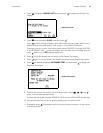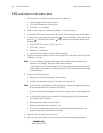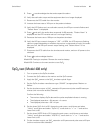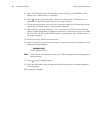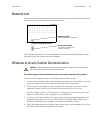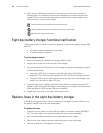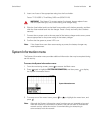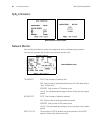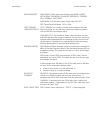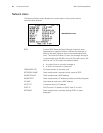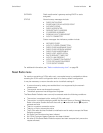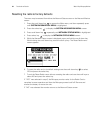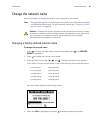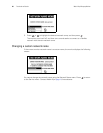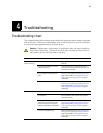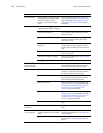Service Manual Functional verification 21
PWR MODE/PSP PWR MODE (5 GHz radio card): Settings are NONE, ERROR,
INITIALIZING, CHANGING, FLASHING, HIBERNATE, STANDBY,
IDLE, NORMAL, FAST, RESET.
PWR MODE (2.4 GHz radio card): Power state ON, OFF
PSP: Power Save Poll Mode, 1-10 or CAM
LOST COMMS /
LOW RSSI EVENTS
LOST COMMS: The number of times communication has been
lost since power up. Any non-zero value may indicate a problem
with the WLAN or the access points.
LOW RSSI EVTS: The number of times communication was lost
and RSSI was less than a given threshold. Any non-zero value may
indicate either inadequate WLAN coverage or that a monitor was
on the edge of coverage for an extended period and was having
difficulty passing data to the associated access point.
RSSI/RSSI METER RSSI (Received Signal Strength Indicator) indicates the strength (in
dBm) of the radio signal as seen by the associated access point as
a negative number. The closer the number is to zero, the stronger
the signal.
RSSI meter: Current RSSI value and plot of RSSI value. The bar
represents the current RSSI. The closer the bar is to the plus sign
the stronger the signal.
A value smaller than -65 dBm for the 5 GHz radio card or -60 dBm
for the 2.4 GHz radio card indicates either:
• a fault in the monitor or in the radio card, or
• an area of poor or no radio coverage
S/N RATIO /
CHANNEL
S/N RATIO: If equipped with the 5 GHz radio card, this indicates the
mobile unit’s Signal-to-noise ratio from an Access Point. If
equipped with the 2.4GHz radio card, then the value will read “N/A”.
CHANNEL: If equipped with the 5 GHz radio card, mobile unit’s
radio band channel. If equipped with the 2.4 GHz. radio card, then
the value will read “N/A”
DHCP LEASE TIME DHCP Lease Time in seconds or “STATIC” if static assigned



